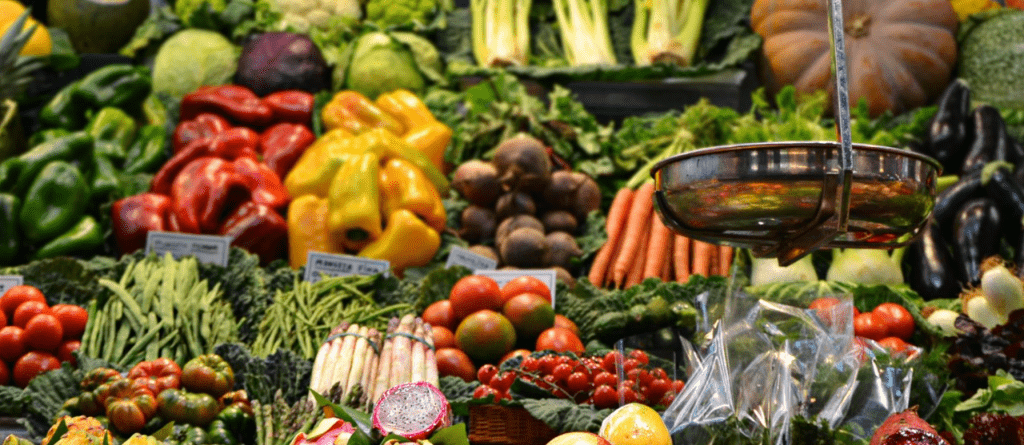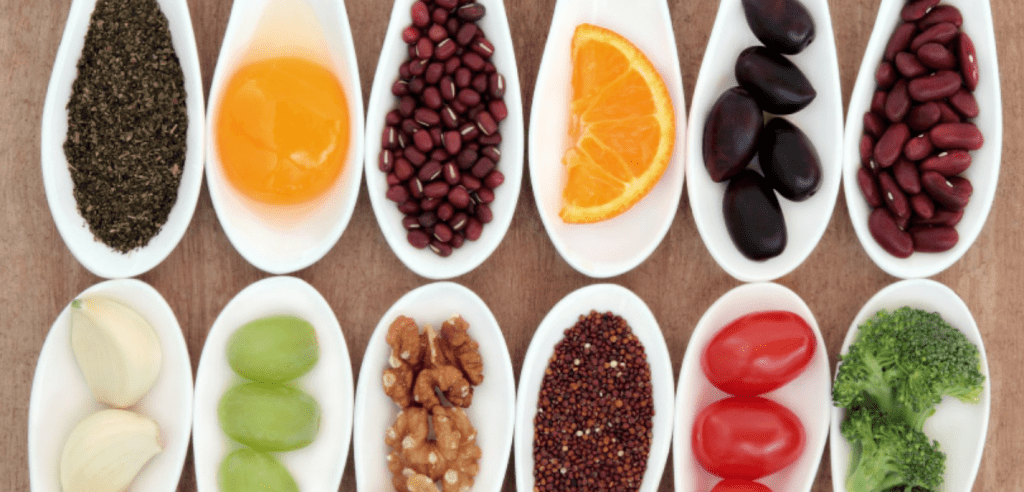
Enhancing your cycling performance can be easily achieved by focusing on your nutritional intake. Often underestimated, nutrition can be a complex aspect of cycling performance. For optimal cycling endurance, it’s crucial to maintain adequate hydration and nutrition during both training and events. This guide is designed to assist you in understanding the essentials of cycling nutrition.
Foundational Elements of Cycling Nutrition
The subject of nutrition can appear complex and confusing as it is highly personalized. What works for one cyclist might not work for you. Instead of complicated rules, let’s focus on the fundamental principles of cycling nutrition, mainly carbohydrates, quantity, and quality.
Daily Caloric Intake
Your daily caloric requirements are individual and primarily dependent on your resting metabolic rate (RMR). The RMR is the calorie count your body needs at rest over 24 hours, essentially serving as the foundation for your energy expenditure.
Keep in mind, your RMR isn’t fixed and can change over time, influenced by age, gender, and lean body mass. You can get an estimate of your daily calorie expenditure using an online calculator that considers your RMR and activity level.
For your activities and training, the energy expenditure can be estimated, particularly with cycling training. By monitoring the number of kilojoules (kJs) your body utilized during a ride or workout with a power meter, you can determine your calorie burn associated with cycling. Keep in mind that 1 kJ is approximately equivalent to 1 calorie.
Even though your daily caloric needs will vary, by adding your RMR and activity calories, you can get a fair idea about your nutritional needs for cycling. To ensure you’re sufficiently nourishing yourself, you can track your weight and well-being.

Macronutrients for Cyclists
Knowing your calorie needs, the next step is determining your food intake. Macronutrients categorize nutrition into three groups — carbohydrates, proteins, and fats. Each type plays a significant role in cycling nutrition and overall health.
Macronutrients serve as a dial for your diet adjustment for cycling performance. Fats and carbs fall at the extremes, with protein as the fulcrum. The initial step is assessing your protein needs, which should ideally be between 1.2-1.4 grams of protein per kilogram of body weight daily for endurance athletes. Then target carbohydrates at 6-10g per kilogram of body weight, as they are the preferred fuel source for the body during performance. The remaining caloric content should be fats.
If your goal is weight loss, your macronutrient breakdown will lean heavier on protein. For more detail, consider consulting Cycling For Weight Loss.
Importance of Carbs, Protein, and Fat
It’s impossible to overemphasize the paramount role of carbs in cycling performance. The mitochondria in your cells use this simple sugar to produce ATP or energy for all activity. Any carbohydrate you eat is eventually turned into glucose. When your body has surplus glucose, it’s turned into glycogen and stored in muscles and the liver.
Once glycogen stores reach their full capacity, the liver converts excess glucose into triglycerides, effectively storing it as fat. The silver lining here is that regular training can increase your muscles’ glycogen storage capacity. Top endurance performance hinges on managing these energy stores, hence the importance of the quantity and timing of your nutrition intake.

As an essential part of cycling nutrition, protein is most commonly associated with muscle building. Beyond muscles, protein also makes up the majority of the body’s tissues, including bone, skin, and hair. It is also used to produce enzymes, hormones, and hemoglobin.
While 0.8 grams of protein per kilogram of body weight daily is recommended for most people, endurance athletes who exert greater physical stress on their bodies, should consider increasing protein intake to between 1.2-1.4g per kg. Some research even suggests that up to 1.8g per kg may provide enhanced benefits.

Often maligned due to their high-calorie content, fats hold a crucial role in cycling nutrition too. They aid in vitamin absorption, hormone production, and creation of fatty acids that your body can’t generate. Of the three types of fats: unsaturated, trans, and saturated, Unsaturated fats like olive or canola oil are frequently considered the healthiest. Although fats can cause stomach discomfort during exercise, this doesn’t mean you should exclude them from your cycling nutrition completely.
Cyclist-Friendly Foods
Heading to the grocery store can be overwhelming due to a plethora of food choices. Remember the two principles — quality and quantity. Quality refers to the nutrient-dense food that helps with your macronutrient balance, and quantity reflects the need for meeting your calorie requirements.
Balancing quality and quantity can be challenging as nutrient-dense foods contain fewer calories, so you would need to eat more to meet your cycling nutrition needs. For instance, a generous serving of salad, chicken, and vegetables makes you full but may yield only around 600 calories.
Suggested Shopping List
Carbs
- Vegetables like potatoes, broccoli, beans, or peas
- Fruits including bananas, oranges, blueberries, and apples
- Grains like oats, quinoa, rice, and pasta
Protein
- Lean protein like chicken, turkey, yogurt, and eggs
- Plant-based protein including tofu, black beans, chickpeas, or edamame
Fat
- Avocado, Nuts, and seeds
- Salmon or tuna
- Olive oil
Ride Nutrition
Knowing your calorie (or kJ) requirements allows you to plan a diet for achieving nearly balanced energy at the end of your ride. High-intensity rides necessitate quick absorbing nutrients, like easy-to-digest sugars such as gels and drink mix. For low-intensity rides, you can incorporate more complex carbohydrates.
There may be instances when the intensity and duration of a ride make it impractical to consume enough calories to maintain energy balance. During such situations, pre- and post-ride nutrition become even more essential.
Nutritional Planning for Long Distance Cycling
Lengthy rides demand considerable nutrition that starts with a plan. A reasonable approach is to intake 60-90g of carbs per hour for rides exceeding an hour. Although cycling nutrition products offer easily digestible carbs, try spreading out your carb consumption over the entire hour, taking in small quantities every 15 to 30 minutes.
Fueling Short Rides
For workouts and rides lasting less than an hour, a bottle of water without extra fuel might suffice. However, that assumes you’ve fueled enough before the ride and that you’ll nourish your body adequately afterward. Keeping your fueling in check even for short rides can set you up for long-term success.
Cycling nutrition for shorter rides can be as simple as a bottle of electrolyte mix or a bottle of water with a couple of energy gels. Fueling during your ride not only preserves the quality of your workout but also ensures your glycogen stores are stocked for the coming days’ rides. Consider short rides as training sessions for longer ones, building solid nutritional habits for long-duration events.
Pre-Ride Nutrition
Before hopping onto your bike, try to fuel up adequately. The objective is to have enough glycogen in the liver and muscles to power your ride. Regular meals consumed hours, if not days before your ride can help achieve this.
Eating several hours before your ride minimizes the chance of gastrointestinal discomfort as the carbs are consumed progressively. Incorporating regular meals to refill glycogen stores also allows you to include other essential nutrients like minerals and vitamins.
Before your ride, carbohydrate absorption is largely contingent on your level of glycogen depletion, rate of ingestion, and the type of carb consumed. The more depleted your glycogen stores, the faster carbs will be absorbed. The type of carb matters too, with complex carbs taking longer to digest and absorb. Whole grains and fiber-rich foods can take a couple of hours, while fruits and vegetables, primarily dependent on their fiber content, usually take between 20-40 minutes.
Note that the intake of protein and fats will extend this digestion and absorption period. A good guideline is to consume a carbohydrate-rich meal 3-4 hours before an event, providing ample time for digestion. If your meal mainly consists of simple carbs, this timeframe can be shortened.
Your cycling nutrition plan can be as straightforward or complex as you prefer, as individual preferences vary significantly. Some cyclists may prefer only a bottle of carb-rich drink per hour, while others may opt for a mix of energy bars, gels, fruit, and water. Remember to account for weather conditions as they can impact your hydration needs.
Once you’ve created a nutrition plan, set an alert on your phone or cycling head unit to remind you when to eat. While it’s crucial to stick to a schedule, always listen to your body’s needs. Solely relying on hunger or thirst cues may leave you under-nourished.



+ There are no comments
Add yours